(Abstract J. Bockemühl) ‘Gräsers Vermächtnis’, a hybrid of an extraordinary parentage. In the 1950’s, Robert Gräser from Nuremberg pollinated Disocactus (syn. Aporocactus) flagelliformis with pollen of Echinopsis (syn. Trichocereus) candicans (nothogenus x Disonopsis G.D.Rowley). He described that the seedlings resulting from this cross initially grew like aporocacti but that after being grafted on different stocks they exclusively developed the traits of the pollen donor. The only difference was a beautiful red flower colour in contrast to the white bloom of the paternal plant. Furthermore, the anthers on the hybrid were sterile or missing. The hybrid, named ‘Gräsers Vermächtnis’ (= “Gräser’s Legacy”) by Klaus Rippe, was used by Gräser for further crosses. Two well known cultivars resulting from these experiments are ‘Gräsers Schönste’ (=”Gräser’s Finest”) and ‘Gräsers Erfolg’ (=”Gräser’s Success”). However, the progeny of crosses with, or among, these hybrids always looked like the paternal trichocereus and never yielded plants showing properties of the original female aporocactus. Therefore, considerable doubts about the parentage of this wide cross arose among botanists and cactus fanciers. The author, however, is convinced of the extraordinary parentage and supports his view with, among others, the critical and responsible character of Robert Gräser, who has published all the precautions he had taken to prevent uncontrolled pollination. Furthermore, the author argues that the fruit was produced on the Aporocactus and not on the Trichocereus, thus excluding the possibility of apomixis. He admits, however, that further genetic analyses will be necessary to elucidate the parentage of this impressive plant.
It is certain that most readers, when viewing the photographs at the side, will be astounded and ask themselves why on Earth Tricheroceeae are being dealt with in this magazine which is dedicated to the friends of epiphytical cacti? This superficially regarded justifiable argument can already immediately be invalidated by the information that this plant is one of the most sensational hybrids within the Cactaceae, for which the creation of an epiphyte had a significant but at first sight not a visible part. We are talking here about the well-known 'Disocactus flagelliformis' (Linné) Barthlott, which the formerly renowned cactei specialist and former chairman of the DKG, Robert Gräser, could eventually pollinate after many previous unsuccessful trials with the pollen of the Echinopsis candicans (Gillies ex Salm-Dyck) D. R. Hunt from North Argentina. This happened at the beginning of the 1950s, when our snake cactus was still called Aporocactus and the then-used white blooming Echinopsis candicans still belonged to the Trichocereae, so that I will use the old terminology for all plants referred to in my following considerations – as far as it is historically necessary.
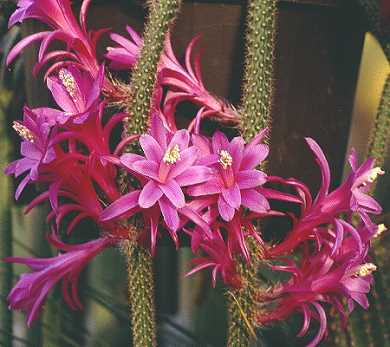
Abb.1 Disocactus flagelliformis.
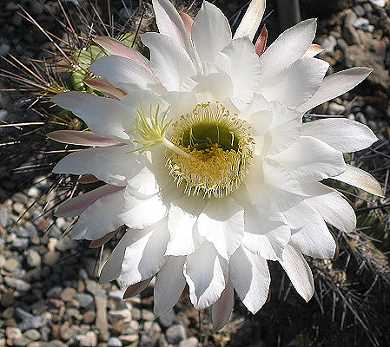
Abb.2 (Trichocereus) Echinopsis candicans.
The interested reader will presumably ask if something like this here is possible at all. That this cross-breeding was successful, I do not doubt. That during the inheritance process almost only the attributes of the male parent be visible in the following generation and that those of the other parent are pushed totally to the background as our example shows: this is extremely unusual! It has not only generated skepticism for some scientists who are occupied with cacti but also caused throughout understandable disbelief about the truth of this event in many cactus lovers. For this reason it is relevant to strike out a bit more and to look at the facts and backgrounds which have been reported in older, sometimes only difficultly accessible editions of our cacti magazine. (Gräser 1957, 1967). The author describes in detail how he achieved the said cross-breeding in which careful measurements for protection were taken to avoid unwanted foreign pollination; how the more than one and a half year period of development of the fruit with Aporocactus proceeded; and how only a few seeds have been sown in the middle of the winter, from which the first ones germinated after 3 weeks. He writes that the seedlings had looked the same as Aporocactus flagelliformis during the early stage, “with small germinal leaves and a relatively long and very thin piece of the stalk between root and germinal leaves”. (Gräser 1957)).
To accelerate the initial growth, he grafted altogether 6 germlings one by one on an Epicactus shoot, by choosing its still very young bastard branches as a temporary base. It was here that the first surprise came, because “between the germinal leaves, globular objects broke out, from which very soon strong, yellow prickles developed. One could assume that the graftlings were small grusonii” (Gräser 1957; connotation: he meant Echinocactus grusonii Hildmann, in the vernacular, known by the not so lovely name of “mother-in-law’s chair”) . Some weeks later he re-grafted on diverse more robust bases, where at a special juvenile plant developed particularly well on Opuntia senilis Parmentier and, three years later, produced the first blossoms which had been anxiously awaited.
Already, before the blossoms had been produced, it could be seen that this going to develop into an almost perfect
image of a pollen giver (by virtue of its habitus and the thick thorns), and with regard to the blossoms there was, as could be
seen, no big difference to the Candicans bloom except for the colour, which Gräser describes as a “beautiful, hard to describe red”, which is denoted according to the colour atlas of the English Gardening Society as “Delft Pink” (Gräser 1957).
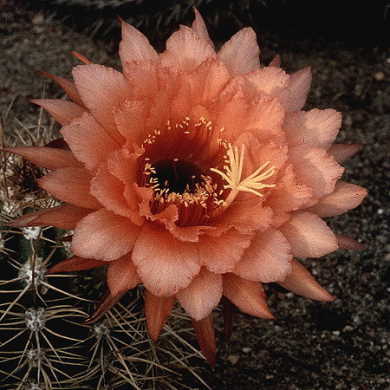
Abb.4 Gräsers Vermächtnis, Foto R. Gräser.
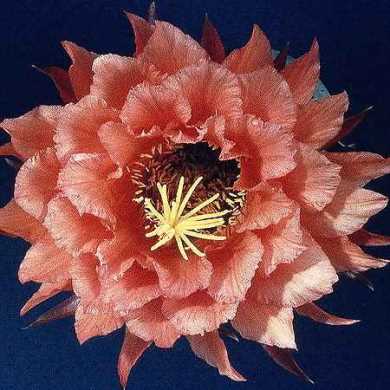
Abb.3 Gräsers Vermächtnis, Foto R. Gräser.
Whatever we may imagine here, it is seen in many cases as the result of an intermediary heredity with participation of the red and white blooming parents, which has been regarded eventually as a clear proof of a participation of Aporocactus flagelliformis for this cross-breeding. Looking at the matter more closely, there is theoretically also another possible interpretation. Considering that the bloom of the Trichocereus candicans is highly variable, depending on its physical location, appearing in many possible colour variations, from white to pink, salmon, yellow, orange, red to crimson (see Eckert & Wessner 2004), then it is also conceivable that the white blooming male parent’s part has also recessive genes for a red or pink blossom color, which could once again have caused the appearance of the “Delft Pink”.
Whatever, this “exotic-looking” plant – the parents being assigned very different tribes within the subfamily Cactoideae – provoked large interest for everyone who is concerned with cacti breeding, also because of the extremely beautiful flowers with their slightly waved blossom leaves which are also fringed at the rims, accompanied by small, crimson colored seams. The filaments are surprisingly red, the anthers are, if they exist at all, mostly deaf, i.e. they produce no or infertile pollen, which can be interpreted as a direct consequence of the fact that both initial types, as mentioned above, are only very distantly related to each other. Indirectly, this would be another, albeit not very clear, argument for the formation of the cross-breeding as much as for the longer blossoms, give some evidence that the compared to their „father“ smaller but longer leaves are probably due to flagelliformis influence.
The new plant was relatively complicated to propagate, because it sprouted only in old age and even then only hesitantly. Its small availability was consequently another reason for being a widely searched for collection object over decades for friends of echinoplis hybrids, and for whom it enjoys even nowadays nearly “cult status”. In the 1970’s, it was included in the “legendary” Stauch Echinopsis Hybrid List under No 321 as ‘Flagcand’ (Aporocactus flagelliformis x Trichocereus candicans) , thereafter propagated as much as possible.
Thus there was at least a certain, sparse distribution among the members of the then Echinopsis Hybrid Group. In the meantime, it was named in honour of the grower, Robert Gräser, by Klaus Rippe, who was personally acquainted with him, taking the name 'Gräsers Vermächtnis' (“Gräser’s legacy”) which is fully accepted today.
G. D. Rowley (1980) created a new nothogenus for our plant, which he denoted as x Aporechinopsis (syn. x Aporotrichocereus Willis = Aporocactus Lemaire x Echinopsis Zuccarini). The ex-species Aporocactus has, however, been reclassified some years ago by Barthlott as Disocactus, thereby reclassifying the hybrid species as x Disonopsis (= Disocactus Lindley x Echinopsis Zuccarini) (Rowley 2004). The “official” name for Gräser’s breeding is now x Disonopsis ´Gräsers Vermächtnis’.
Latterly, some hybrid enthusiast friends of Axel Neumann from Irxleben and Reinhard Liske from Hodenhagen, have devoted themselves especially to the propagation of this hybrid by perfecting the not-so-easy art of the grafting of Areoles, thus being able to reproduce them in larger “lot sizes” than ever before (Neumann 2005). It is, thus, to be expected that the “desirability status” of this plant will be significantly relaxed in the near future.
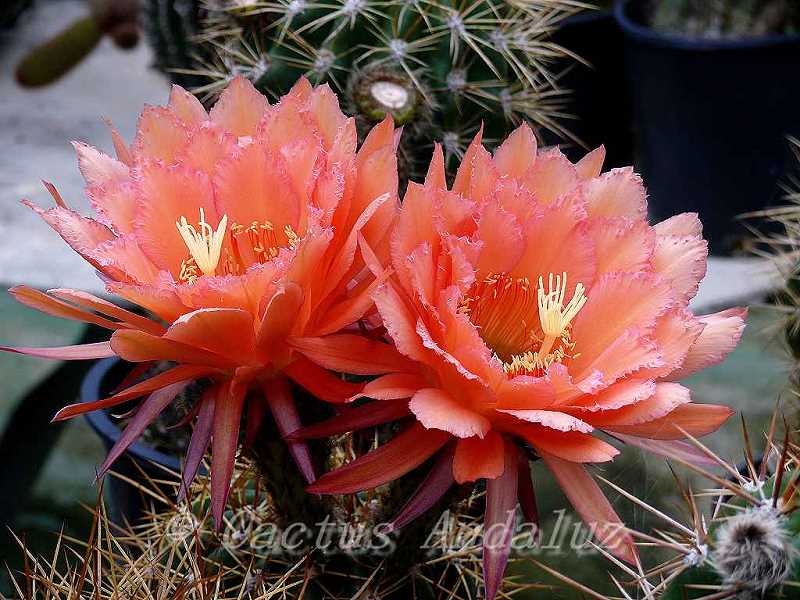
Abb. 5 ´Gräsers Schönste´
As a compliment to this, I still want to mention that our plant has been used for further breeding even by Gräser himself, since it has proven very fertile when used as the female partner. The most famous of all these consecutive hybrids were the two “super stars“ '´Gräsers Schönste´' and '´Gräsers Erfolg´', the former having old rose crown leaves with blueish-red coloured seams, and the latter having dark red to crimson petals, and again with slightly longer and obviously slimmer receptaculum. Their strongly crinkly and fringed blossoms contribute to the incomparable beauty of both types of blossoms, which occurred already with the “mother”, but here in much more distinct form; and it can even appear again once in a while in further consecutive generations . Both of these (and others, in addition) have been created by the cross-breeding of ’Gräsers Vermächtnis’ with an especially selected, dark red blooming ’SCHIGRA’-F2 hybrid from a Grex, which has been bred as well by
Gräser, which, as the name suggests, was produced by an alliance of the so-called Trichocereus schickendantzii (Weber) Br.& R. with Helianthocereus grandiflorus (Br.& R.) Backeberg (today both listed as Echinopsis Zuccarini). All the forementioned plants as well as all further breedings based on them (as long as no partners from “alien“ species were involved), and which would have been assigned to the hybrid species x Disonopsis, have never been shown to possess any attribute of the “ancestral female parent” Aporocactus flagelliformis. This is even valid for hybrids of the cross-breeding ’Gräsers Schönste’ x ’Gräsers Erfolg’, which have also been created from a more direct continuation of the original breeding line (“grandchild generation“) – and this, even though we know that Aporocactus normally leaves clearly-visible traces in the immediate next generation with cross-breedings e.g. with Epicacti, Heliocereea, Selenicereea and others!
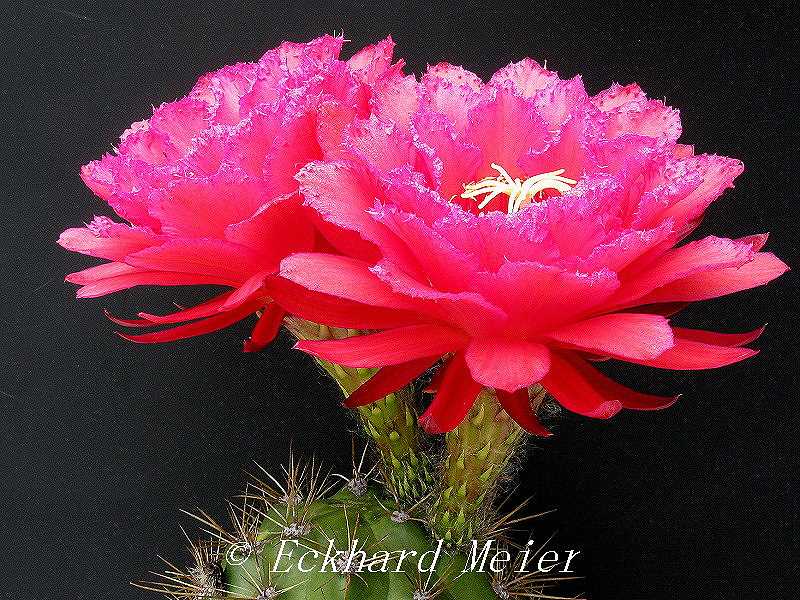
Abb.6 'Gräsers Erfolg'.
Now we come back to the start of this article, where we asked ourselves about the credibility of the Gräser cross-breedings, in which Aporocactus flagelliformis played an important role as one of “our“ very own plants, about which, however, doubts seemed not to be have been totally unjustified. Nevertheless, there are some evident arguments for the truth of Gräser’s hybrids and his related statements, which I want to list once again:
- Robert Gräser was a very faithful and credible man, judging from all that I heard from people who knew him well personally,. He also had the necessary scientific knowledge as a lecturer at the Nuremberg Gardening Technical College to be able to give credible explanations of his cross-breeding trials to his own and others’ satisfaction, both in theory and practice, just as he kept proving over and over again in his many earlier contributions in the KuaS.
- For the abovementioned cross-breeding, all conceivable provisions have been made to exclude a potential, uncontrolled pollination of the Aporocactus blossom.
- The fruit which has been produced after the pollination process, was maturing on Aporocactus flagelliformis as a female parent plant, not on a Trichocereus candicans.
- The seedlings which have been produced by the cross-breeding resembled the “mother“ in the initial state. After the appearance of the small plant bodies between the germination leaves, the attributes of Trichocereus started to dominate.
- Even the fact that externally small Trichocerea were created from the sowing is even a strong evidence for a credible success of the cross-breeding, because stimulus pollination or Apomixis are excluded as possible causes.
- The blossom colour of ´Gräsers Vermächtnis’ (“Delft Pink“) and its slightly extended receptaculum (“blossom tube“) as well as later again with ’Gräsers Erfolg’, could possibly be regarded as additional hints to a participation of Aporocactus. In case the pink pigment should be due to a existing recessive Candicans gene, this would also be another proof of the fact that the cross-breeding “worked”.
- Gräser mentioned that the blossom of ’Gräsers Vermächtnis’ measured “only“ 13 – 15 cm in diameter, while the Trichocereus candicans which was used had 20 cm wide flowers (Gräser 1957). Now, the bloom of the hybrid is still to be regarded as being of a respectable although still smaller size, being that this could have been caused by the “small blooded“ female parent.
A small element of doubt still remains because the attributes of the “mother disappear and do not re-appear which cannot be explained using the Mendelian laws. The only – and I want to emphasize explicitly, not likely – possibility for an explanation would be that Gräser has sown – maybe by confusion – the seed of another Trichocereus- bzw. Helianthocereus-cross-breeding , which would make the existing results, of course, easier to understand. But I cannot believe this for reasons which I have explained in detail. A clarification of the contributory factors involved in the creation of this hybridis only possible via complex genetic research, e.g. by research into the iso enzyme polymorphism of that plant.
| Literatur | ||
|---|---|---|
| Gräser, R. (1957): | Zwei schöne Hybriden. – Kakt. and. Sukk. 8 (Nr. 9):130–132 | |
| Gräser, R. (1967): | Eine schönblühende Hybride. - Kakt. and. Sukk. 18 (Nr. 1):9–11 | |
| Neumann, A. (2005):Das Projekt: | Vermehrung der Tricho-Hybride ’Gräsers Vermächtnis’. - Hybriden-Journal Nr.2: 6–8 | |
| Rowley, G. D. (1980): | Name that Succulent:113. Stanley Thornes (Publ.) Ltd., Cheltenham | |
| Rowley, G. D. (2004): | Intergeneric hybrids in Cactaceae – an update. - Cact. Syst. Init. Nr.18:13 | |
| Eckert, K. & Wessner, A. (2004): | Die Farbspiele von Echinopsis candicans. - Kakt. and. Sukk. 55 (Nr.1):15-21 | |
The article, Gräsers Vermächtnis, an hybrid of an extraordinary parentage, was published in
EPIG edition 59/2007.
Publication with kind permission of the author and the editorial office of the EPIG.

´Eine schönblühende Hybride´
made by ´Horsti´, Horst Osterwald.


